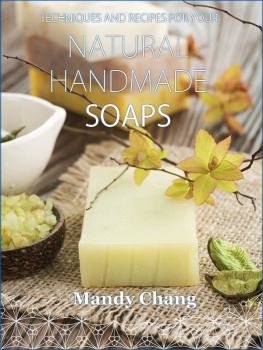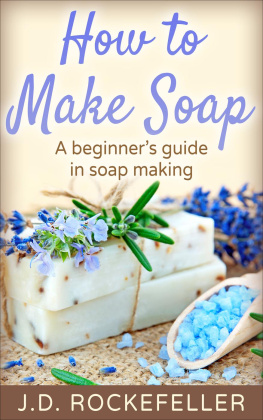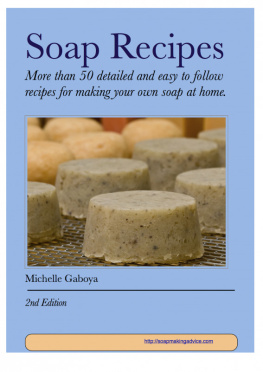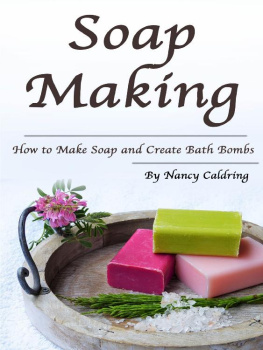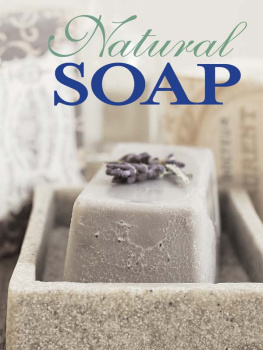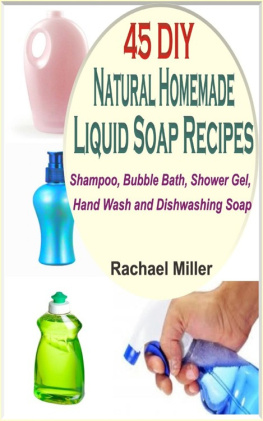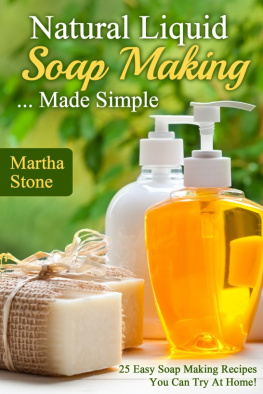Sally Hornsey runs Plush Folly, a leading cosmetics training company specialising in a range of cosmetic-making workshops, home study courses and kits. Awarded with Registered CPD Presenter status, Sally writes and delivers the workshops and oversees the home study programmes. She has taught many students how to design a range of bar and liquid soaps for their own use and has given them the skills and knowledge they need to establish a flourishing business. Plush Folly products have been sold in France, Germany and Luxembourg, and have graced the shelves of many shops, including Harrods and Fortnum & Mason, as well as appearing at the Chelsea Flower Show. Sally is also the author of Make Your Own Perfume and Make Your Own Skin Care Products.
Also by Sally Hornsey
Make Your Own Perfume
How to create your own fragrances to suit mood, character and lifestyle
Make Your Own Skin Care Products
How to create a range of nourishing and hydrating skin care products

Constable & Robinson Ltd
5556 Russell Square
London WC1B 4HP
www.constablerobinson.com
First published in the UK by How to Books,
an imprint of Constable & Robinson, 2014
Copyright Sally Hornsey 2014
The right of Sally Hornsey to be identified as the author of this work has been asserted by her in accordance with the Copyright, Designs & Patents Act 1988. All rights reserved. This book is sold subject to the condition that it shall not, by way of trade or otherwise, be lent, re-sold, hired out or otherwise circulated in any form of binding or cover other than that in which it is published and without a similar condition including this condition being imposed on the subsequent purchaser.
The material contained in this book is set out in good faith for general guidance and no liability can be accepted for loss or expense incurred as a result of relying in particular circumstances on statements made in the book. Those with allergies, or pregnant women, should take particular care when handling some of the ingredients used in soap making and, if in doubt should, consult a qualified medical practitioner.
A copy of the British Library Cataloguing in Publication Data
is available from the British Library
ISBN: 978-1-90897-423-5 (paperback)
ISBN: 978-1-84528-562-3 (ebook)
1 3 5 7 9 10 8 6 4 2
Printed and bound in the EU
This book is dedicated to the boys in my household
Nick, Harry and Jonah, the best soap testers ever!
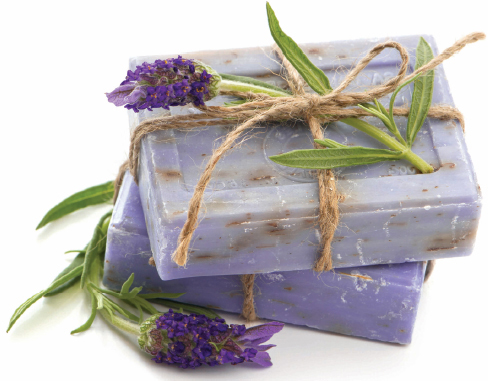

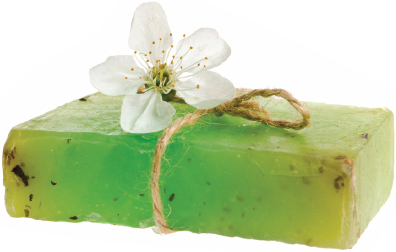
Contents
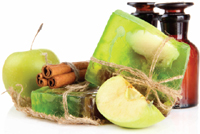
Acknowledgements
A giant thank you to everyone who helped me with various aspects of this book. To my lovely team at Plush Folly, who protected me from the phone, emails and visitors during the book writing and soap making sessions: you are all massively appreciated. Your next task is to help me use up all this soap...
The photographs in this book have been a labour of love and I thank Tom Weller and Chloe Strike for snapping away whilst I made soap. The biggest thanks of all go to Lizzi Roche, ex Plush Folly, who spent hours and hours with me, taking thousands of photos so that we could pick and choose the most appropriate ones for the book. Lizzi, you are a star!
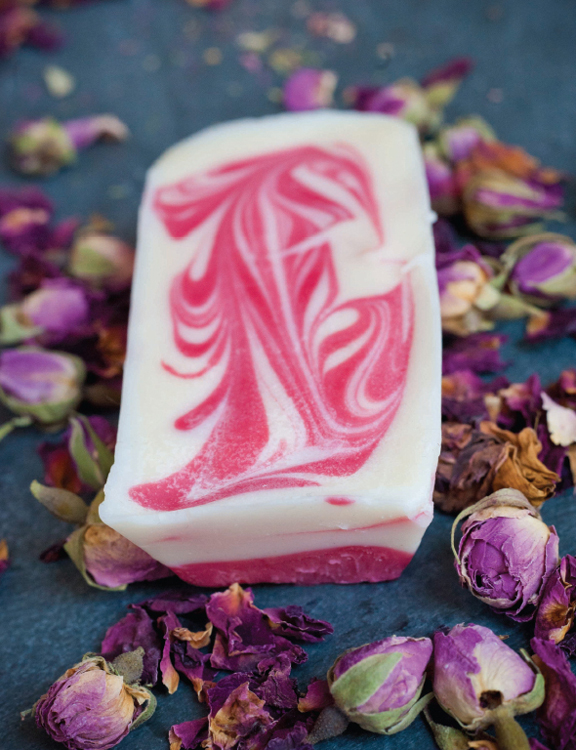
Handmade soaps can be beautiful to look at, as well as beneficial to the skin
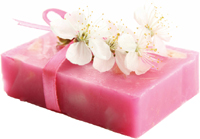
Introduction
Welcome to the world of soap making! If you have never made soap before, you are in for a real treat and Im certain it wont take long before your soap making becomes a passion and addiction, even an obsession.
How to Make Your Own Soap covers a range of different soap types. I have included hard bars of soap and liquid soaps, bars crafted from pre-made bases and bars made from scratch, including making your own melt-and-pour base. The book also covers making liquid and cream soap using lye, as well as making liquid soap from surfactants.
It wont take long for you to discover that the biggest section in the book is the one on making hard bars of lye soap, since it is here that you can experiment beyond your wildest imagination once you get the hang of making the soap. There are so many different ingredients that you can include in your soap, some of them quite surprising.
We have experience of soaps that include rain water, sea water, champagne, double cream, cow dung, rendered fat from road kill, stinging nettles, silk fibres, Halloween carved pumpkin leftovers, and even (forgive me here) excess fat from liposuction.
This book covers techniques and methods to make an assortment of soaps and guides you through how to create your own versions of both hard bar and liquid soaps. Ive tried to keep the recipe sizes small so that you dont start building too much of a soap mountain, but Im certain youll have plenty of friends and family willing to take excess soap off your hands. All the recipes can be doubled and multiplied upwards when youre ready to make in large quantities as the demand for your soap grows.
No matter what style of soap you are making, you will be dealing with hot liquids and possibly caustic ingredients too. Do take heed when handling these and make sure you follow all the safety precautions outlined in this book and on the ingredient packaging.
Enjoy your soap making adventure, have fun experimenting with the huge choice of ingredients available and relish how very, very lovely your soaps and skin feel when bathing.

CHAPTER ONE

Making traditional bars of soap
Traditional soap is generally considered to be proper soap. Rather than being created from a ready-made soap base, such as the melt-and-pour glycerine soap base, this type of soap is made from scratch using sodium hydroxide (also known as caustic soda), water and fats.
Traditional soap is made by combining a sodium hydroxide and water solution (also known as lye) with fats (natural oils, butters and waxes). The combination of three basic ingredients water, sodium hydroxide and fat causes a chemical process called saponification, which results in the creation of hard bars of nourishing, lather-rich, moisturising soap.
There is no lye left in the final soap provided it has been made correctly.
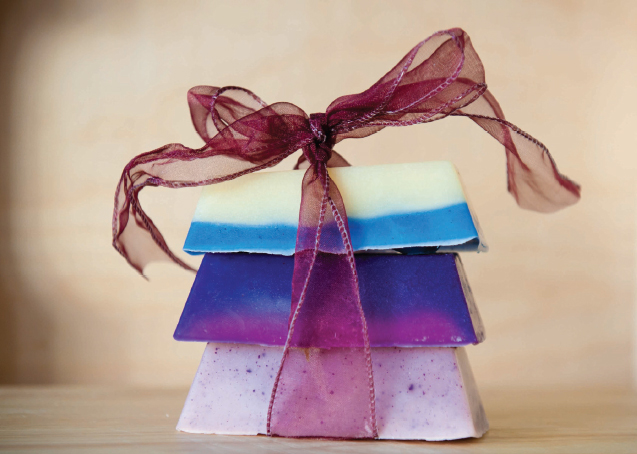
Next page

